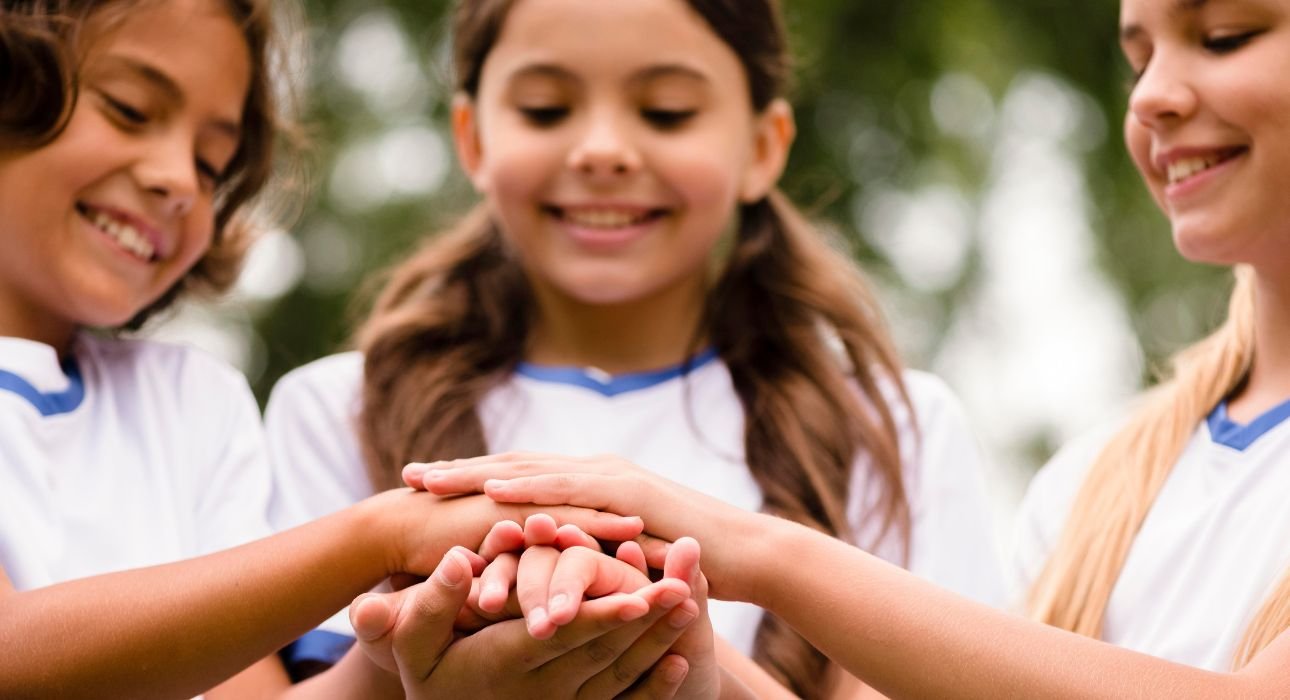If conflict resolution and healthy communication techniques were taught to children in schools and were part of their curriculum, what would occur? That is where school peace programs attempt to bridge the gap and substitute traditional academic systems with a more holistic and well-rounded one.
What Are School Peace Programs?
- School peace programs are intervention models structured and developed with the aim of teaching children non-violent means of conflict resolution, empathy, and build inclusiveness among peers. These enterprises play a vital role in creating safe spaces in school environment while cultivating interpersonal skills that students carry with themselves into their friend circles, homes and communities (Bickmore, K., 2011).
- The initiatives range from peer mediation and leadership training to addressing anger management, assertiveness, and cooperative problem-solving (Trifonas, P. P., 2014).
- Programs such as Empowered Student Partnership or Peace Education Weeks offer participants opportunities to exercise conflict resolution. The structure of these sessions or events often includes role-play, dialogue exercises, and peace rallies.
- The primary goal is to equip students or participants with the ability to resolve peer-level conflicts and inculcate empathy, respect, and positive conduct within communities of educational institutions.
In countries like South Africa, peace programs have been acclimated to local socio-cultural contexts, which have shown better effectiveness in learning peace management (Dovey, V., 1996).
Read More: How to Cope with Mental Health in Conflict Zones
Factors Behind Successful Implementation
- Consistent adult support: Teachers, counsellors, and administrators must be engaged thoroughly throughout sessions and for follow-ups. Any help that students seek must be looked after by them.
- Training for Educators and Parents: Educators and parents need training in conflict resolution and empathy-building so that they can guide the students efficiently.
- Defined roles: Students should clearly understand their roles and responsibilities given to them as mediators or leaders.
- Timetable integration: Peace programs should be part of the formal academic schedule.
An example of successful implementation would be the Peace Education Program (PEP) implemented among seventh-grade Turkish students (Sadri-Damirchi, E., & Bi̇lge, F., 2014). It concentrated on teamwork, empathy, and conflict resolution, resulting in improvement in communication skills (as viewed through cognitive, behavioural and emotional dimensions).
Read More: Peacebuilding Through Psychology: Understanding Peace from Within
Strengthening School-Family Partnerships
Peace programs work best when schools and families collaborate. These programs are meant to reach not just the students but also their families. In South Africa, for example, this collaboration is achieved through:
- Establishing and including platforms for parents to engage in discussions.
- Sharing guides and tools for effective discipline and communication between parents and children.
- Involving community organisations for broader outreach to communities unaware of the program’s impacts.
When families understand and support the education imparted to students in school, they are more likely to adopt peaceful communication techniques at home by themselves.
Read More: The Psychology of Parenting: Balancing Rewards and Mental Health Challenges
Supporting Evidence from Parenting Programs
Parenting workshops and communication education programs further validate the effectiveness of conflict resolution training:
- Parents are taught skills such as active listening, using “I” statements, and spending quality time together.
- Learned skills contribute to increased family empathy, emotional warmth, and better parent-child communication.
These results suggest that when communication skills are taught intentionally, both schools and homes benefit (Uçar Çabuk, F., & Tezel Şahin, F., 2023).
Read More: Perfect Parenting Doesn’t Exist And That’s Okay
Emotional Transfer
The application of effective communication programs in schools helps students with effective communication and anger management, which they apply in their circles as well as in their homes. Students learn these practical strategies at school that help improve family dynamics:
- Expressing feelings without conflict
- Listening to others without judgment
- Negotiating and compromising
Studies have shown that children who practice these skills in school are more likely to apply them with siblings and parents, reducing household tensions.
The Long-Term Benefits of Peace Education
School peace programs have long-lasting effects on a child’s social development and emotional intelligence. As children transition into adolescence and adulthood, the skills they acquire through these programs shape how they approach various kinds of relationships, conflict, and decision-making throughout the rest life.
- Cognitive and Adaptive Conflict Resolution Skills: Children who are enrolled in peace education are more likely to approach disagreements and conflicts constructively to avoid escalation. These traits are important not just in family settings, but also withing structures of workplace, friendships or romantic relationships.
- Empathy and Emotional Literacy: Peace education emphasises upon understanding emotions and dealing with them well. These lessons serve as guides for people in adulthood to build healthy and respectful relationships in all areas of life.
- Academic and Behavioural Improvements: Schools that implement peace programs tend to experience improvements in academic performance. When children feel safe, respected and emotionally supported, they are motivated to learn. They end up being more focused and cooperative.
- Cultural Sensitivity and Inclusivity: Many peace programs are designed to be culture-inclusive. Students learn about diverse cultures and grow more respectful and sensitive towards them.
Read More: Should Parents use Corporal Punishment?
Challenges to Program Effectiveness
Despite the benefits, peace programs face challenges of their own:
- Resource constraints: Not all schools can afford to have trained facilitators or materials to smoothly and consistently impart peace program education.
- Uneven access: Rural or underfunded schools may lack these initiatives because they’re mostly out of reach.
- Disciplinary focus: Schools that emphasise punishment over learning may not foster long-term communication changes.
- Superficial labelling: Overemphasis on labelling and punishing behaviour (e.g., bullying) overlooks deeper problems like cultural pressures or unfair systems. Instead of fixing the root cause, the focus remains limited to surface-level behaviour (Bickmore, K., 2011).
To truly influence healthy family communication, peace programs must address these limitations by:
- Ensuring inclusivity across socioeconomic backgrounds.
- Engaging families and giving them platforms to voice their opinions consistently.
- Moving beyond labelling to build applicable skills.
Conclusion
Students who learn peace-building at schools tend to bring it homes too, fostering healthy environments around them, irrespective of context. School peace programs, when implemented thoughtfully and inclusively, help students resolve peer conflicts and nurturing understanding at home. Uniform application of peace-building techniques across communities helps children as well as their families and communities to maintain healthy relationships.
FAQ’s
1. What are school peace programs?
School peace programs are structured activities and lessons taught in schools to promote nonviolent conflict resolution, empathy, and cooperation among students.
2. How do these programs help students at home?
By learning communication and problem-solving skills at school, students often apply these skills in their home environments, leading to better family relationships.
3. What role do parents play in school peace initiatives?
Parents are encouraged to be involved through workshops and collaboration with schools. When parents use similar communication techniques, it strengthens the impact of what children learn at school.
4. Are school peace programs the same everywhere?
No, they are often adapted to local cultural and community needs. For example, in South Africa, peace education may start early and include community outreach.
5. What kinds of activities are included in these programs?
Activities include peer mediation, student clubs, peace rallies, role-plays, and lessons on topics like anger management, empathy, and assertiveness.
6. Do these programs really work?
Research has shown that students who participate in peace programs have better communication skills, reduced aggression, and stronger problem-solving abilities both in school and at home.
7. Can these programs improve parent-child relationships?
Yes, when students learn how to express their feelings and listen to others, it often leads to better conversations and fewer conflicts with family members.
8. What are some challenges these programs face?
Some schools may lack resources, trained staff, or ongoing support. Also, if the focus is only on discipline or rules, deeper issues like cultural misunderstandings may be overlooked.
References +
1. Bickmore, K. (2011). Policies and programming for safer schools: Are ‘anti-bullying’ approaches impeding education for peacebuilding? Educational Policy 25(4, July) pp. 648 – 687. https://tspace.library.utoronto.ca/bitstream/1807/32459/1/SaferSchoolsPolicy.pdf
2. Dovey, V. (1996). Exploring peace education in South African settings. Peabody Journal of Education, 71(3), 128–150. https://doi.org/10.1207/s15327930pje7103_8
3. Trifonas, P. P. (2014). On human rights, philosophy, and education. In Routledge eBooks (pp. 71–87). https://doi.org/10.4324/9780203844854-6
4. Sadri-Damirchi, E., & Bi̇lge, F. (2014). The effect of Peace Education Program on the seventh-grade students’ conflict resolution and communication skills. TED EĞİTİM VE BİLİM, 39(175). https://doi.org/10.15390/eb.2014.2983
5. Uçar Çabuk, F., & Tezel Şahin, F. (2023). The Effect of The Parent-Child Communication Education Program on Parent-Child Relationship and Communication. International Journal of Education Technology and Scientific Research. Vol. 8, Issue 23 https://www.ijetsar.com/Makaleler/1510128089_25.%201636-1682%20Feyza%20U%C3%A7ar%20%C3%87abuk.pdf
6. Bickmore, K. (2011). Policies and programming for safer schools: Are ‘anti-bullying’ approaches impeding education for peacebuilding? Educational Policy 25(4, July) pp. 648 – 687. https://tspace.library.utoronto.ca/bitstream/1807/32459/1/SaferSchoolsPolicy.pdf













Leave feedback about this